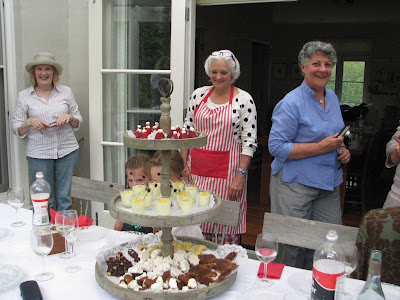Middle Kingdom 2025 – 1773 BC
Reunification. After a series of conflicts, Mentuhotep II controlled all of Egypt from the City of Thebes (Luxor). It was to become the centre of power of a reunited Egypt and launched a flourishing Middle Kingdom. The State made a rapid recovery under his strong leadership, trade revived and the unified county prospered. This period saw the rise of a middle class and widespread patronage of art and culture encouraging classical forms to take shape. Kings ruled due to the nature of their personality and politics rather than divinity alone.
 |
| Colossi of Memnon |
Rock cut tombs replaced pyramids in large and elaborate burial grounds (necropolis, usually sited across the Nile to separate the cities of living and dead. Essentially this was to deter plundering of tombs and the vast wealth buried with them. Walls were covered with reliefs and frescoes as in former times and subjects were much the same. However, narratives of warfare replaced scenes of country life as military campaigns surged into Nubia to secure gold deposits and trade routes. These renditions were lively and linear.
Painting was still bound by convention but there were some daring attempts at depicting foreshortening, shoulders and backs. We begin to see the use of tempera as a medium – ground pigments and a binding agent such as egg white. Portrait sculpture extended into expressions of personality and mood; the results were often introspective and severe.
A period of instability followed as invaders from Asia moved into the Delta and the kingdom divided again. However advantages were apparent, including exposure to chariots, composite bows and bronze weapons.
New Kingdom 1550 – 1069 BC
Pharaoh is introduced. The New Kingdom will become 500 years of settled progress and advancement. The term Pharaoh is coined for its rulers and reflects the elaborate administrative system that had been built up around the king. Whist his power was absolute and strong, rulers dispensed law and order in more personal fashion.
Most impressive monuments of this period are the grandiose temples. Burial still demanded elaborate care and temple plans evolved from ritualistic requirements. This was workmanship on a grand scale; columns were cut from single pieces of rock, plans were still bi-laterally symmetrical, and architects made use of clerestory lighting. Despite their massive size, columns were decorative rather than functional. The Temple of Ramesses II and Mortuary Temple of Queen Hatshepsut (not the first queen to rule but the first to make herself a pharaoh) are classic examples of this period. During the New Kingdom, most of the pharaoh’s tombs were constructed in the Valley of the Kings.
 |
| Thebes |
Under the pharaoh’s patronage, craftsmanship reached new levels of technical skill and sophistication. Conventions are broken and frontal poses were attempted. There was a relaxation of stiff rules and rigid themes - informal and intimate poses contrast strongly with traditional formality; rigid lines become free-flowing and there is more realism in detail – a freer expression. Proportions of work no longer depend upon rank and stature. Figures showed an emphasis on movement and action. However, as is evident in the statue of Akhenaton and portrait bust of Queen Nefertiti, sensitivity of facial expression is still hampered by a standard of spiritual beauty which they adjusted to the likeness of their subjects. Ritual simplification of form in painting and sculpture however eventually led to a cubic block look. This period is characterised by a fondness for volume enclosed by flat and unambiguous planes. Despite this there was still no use of perspective.
As Egypt’s wealth grew, so too did the religious orders. However, a break from orthodox religion was instituted by Akhenaton (1379 – 1365 BC) during his reign. He married beautiful Nefertiti and promoted Aton as single god. His career ended in political strife and military coup and a gradual decline became evident until the reign of the Ramesses Dynasty. Ramesses II is considered one of Egypt’s greatest builders and is known to have signed the first recorded peace treaty. Despite this reinstitution of stability, it checked the development of artistic expression and workmanship.
The period ended with powerful Theban priesthood controlling the upper Nile and the last of the 20th Dynasty Pharaohs ruling from the Delta. By the end of the New Kingdom, Egypt was almost bankrupt.
Late Dynastic Period 712 – 332 BC
Breakdown. This was a period of warfare but it did see some prosperity due to trade. There was a short period of Egyptian revival but in a rapidly changing world, the old ways could not flourish. Ultimately, Egypt continued to suffer from invasions and this instability did little to promote culture. It became a period of decline in all fields and the last Persian invasion of 343 deposed Nectanebo II. He was to be the country’s last Egyptian ruler until 1952.
Macedonian & Ptolemaic Period 332 – 30 BC
Honour, Infamy then Scandal. In 332 BC Alexander the Great made his move on Egypt. The relationship was one of mutual acceptance and whilst Alexander ordered the restoration of all temples destroyed by the Persians, he was busy building the Mediterranean cosmopolitan city of Alexandria.
 |
| Would Alexander recognise his city today? |
Following his death in 323 BC, one of his generals, Ptolemy, became the first in a long line of Ptolemaic rulers. Alexandria flourished and became famous for its Great Library and Lighthouse. One of the Ptolemy kings even started a canal to join the Nile to the Red Sea (270-269 BC) to open up the trade route to India.
Cleopatra became famous for her collusion and double-dealings with the Caesars. Her relationship with Marc Anthony led to their downfall and the end of the Ptolemaic Dynasty.






























